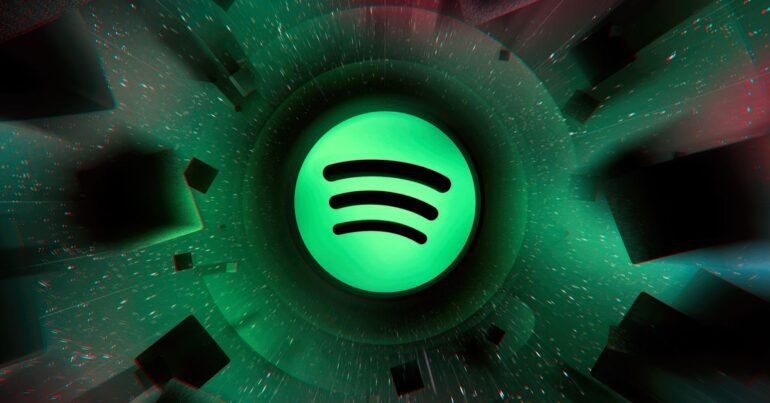TL;DR:
- Spotify is exploring the development of AI-powered playlists, according to code hints in the app.
- These playlists would allow users to create music lists using prompts, possibly integrated into the Blend genre.
- Spotify remains tight-lipped about this potential feature.
- The groundwork for this innovation might have been laid through the Niche mixes, although they are currently not AI-powered.
- Code references suggest the possibility of collaborative playlist creation.
- Spotify has a dedicated team working on advanced language models and personalization techniques.
Main AI News:
In the ever-evolving world of music streaming, Spotify is once again taking a giant stride towards harnessing artificial intelligence to enhance user experience. Following the resounding success of Spotify’s AI-powered DJ feature and its recent support for AI-translated podcasts, the platform is now poised to introduce AI-generated playlists. Clues found within the app’s code suggest that Spotify is actively developing these generative AI playlists, allowing users to curate music based on prompts.
Renowned tech expert turned investor, Chris Messina, recently uncovered these intriguing additions in Spotify’s app code. References to “AI playlists” and “playlists based on your prompts” have ignited speculation about a forthcoming feature. Messina speculates that this feature might find a home within the Blend genre, where user preferences are blended to create playlists that cater to everyone’s musical tastes.
When approached for comment, a Spotify spokesperson remained tight-lipped, stating, “At Spotify, we are constantly iterating and ideating to improve our product offering and offer value to users. But we don’t comment on speculation around possible new features and do not have anything new to share at this time.”
Interestingly, Spotify might have been laying the foundation for AI playlists created with prompts when it introduced Niche mixes. This existing feature allows users to craft unique playlists based solely on textual descriptions. While these Niche mixes currently cover a broad spectrum of user preferences, from genres to moods and aesthetics like “Cottagecore Indie Mix” or “Feel Good Driving Mix,” Spotify clarified upon their launch in March that they were not AI-powered but rather driven by the platform’s personalization technology and algorithms.
Messina’s findings indicate that the upcoming AI playlists might also rely on prompts. However, as of now, this feature remains concealed within the app’s code, and its public release is uncertain. Notably, there are hints in the code suggesting that users may have the ability to invite others to collaborate in creating AI playlists, potentially through the Blend feature.
It’s important to note that not all internal features tested by companies make it to the public domain. Nonetheless, this development hints at Spotify’s keen interest in leveraging AI for music personalization, a path it has previously hinted at with the introduction of the AI DJ feature.
Spotify’s commitment to AI extends beyond just playlists. The company’s head of Personalization, Ziad Sultan, has revealed that a dedicated team at Spotify is working on the latest language models. Spotify’s extensive workforce, including a sizable research team, is actively exploring the potential of Large Language Models, generative voice technologies, and advanced personalization techniques. As the music streaming landscape continues to evolve, Spotify’s foray into AI promises to shape the future of music discovery and enjoyment.
Conclusion:
Spotify’s potential venture into AI-generated playlists signifies the platform’s commitment to revolutionizing music personalization. If successfully launched, this feature could significantly enhance user engagement and cement Spotify’s position as a leader in the competitive music streaming market. As Spotify continues to invest in AI technologies, it positions itself for continued growth and innovation in the industry.

